Shining the spotlight on shrubs
What is your favorite native shrub? Does anything immediately come to mind?
Shrubs sometimes get short shrift in the gardening world. They’re the middle-grounders, neither the bright flowering stars in the front row nor the bosses in the canopy. They’re the fillers, knitters, connectors, and hedgers that naturally define garden spaces and rub shoulders with us. They spatially relate between the tree layer and the ground layer. In short, shrubs often form the foundational elements in a garden, but rarely wind up as the center of attention.
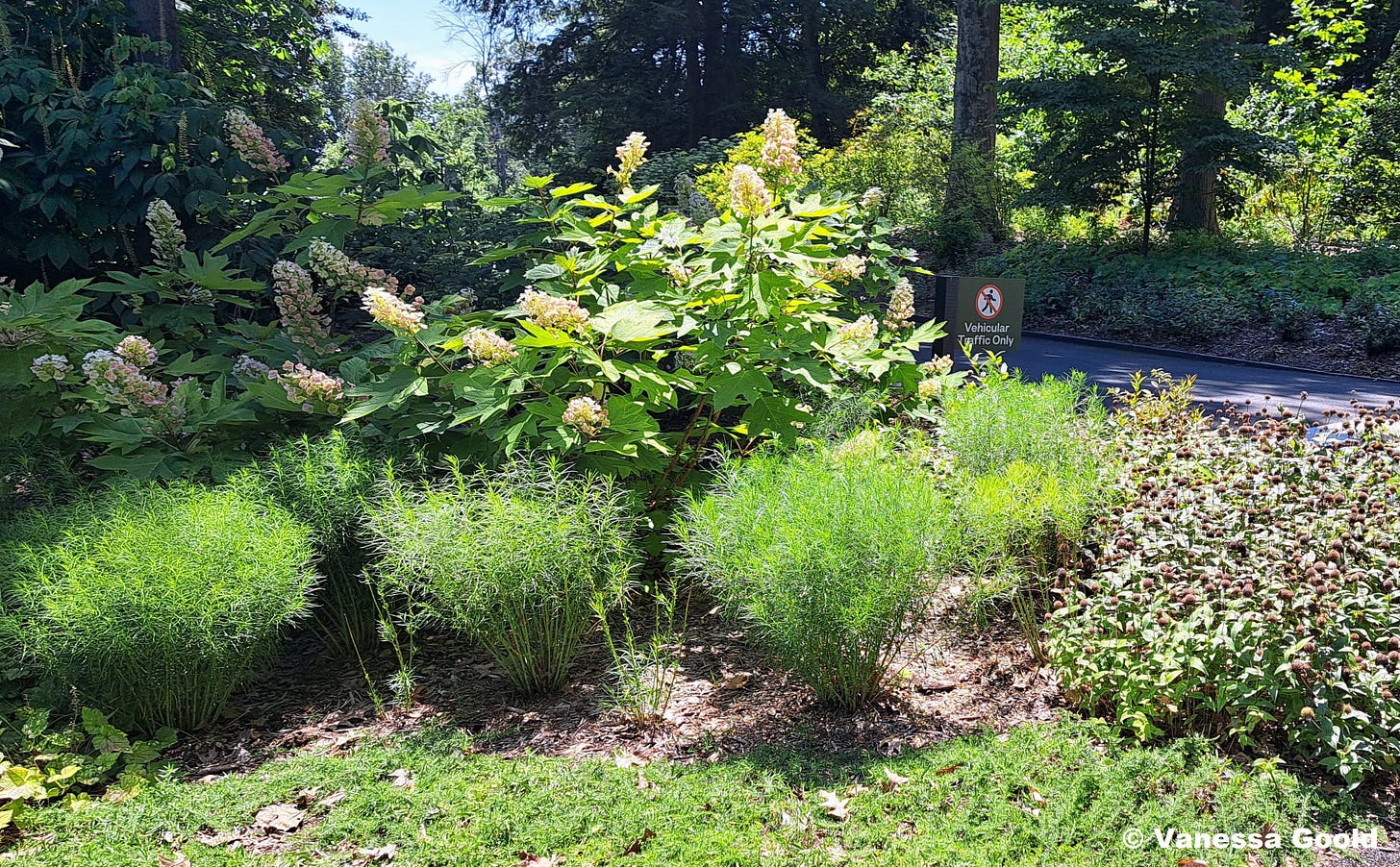
Ecologically, shrubs offer multi-faceted benefits for both wildlife and gardeners. Perhaps most notably, they are crucial supports for birds. Shrubs provide essential food sources for birds in the form of fruits and berries, seeds, nectar, and indirectly insects, who feed on their leaves. Shrubs represent critical shelter and nesting sites as well. Their dense branches and twigs provide excellent protected spots for birds to make their nests out of reach of predators. Shrubs that weave together form corridors that birds use as safe travel ways and foraging space.
Creating thickets
When you read the word “thicket,” what do you think of? For me, a thicket sounds like a messy conglomeration of plants, usually on the edge of the woods, possibly with poky thorns, that blocks passage and is not particularly welcoming to humans.
Oxford Dictionary apparently does not have thicket baggage like I do, and defines a thicket simply as “a dense group of bushes or trees.”
For birds and small mammals, thickets are safe havens. They provide invaluable refuge and cover where wildlife can do wildlife things. Thickets support diverse insect populations, and more insects mean more food for birds and other animals.
As ecological gardeners, we can intentionally create thickets—perhaps even aesthetically pleasing and somewhat orderly ones!—to protect birds and animals and give them safe spaces to thrive.
A few recommended species native to the Mid-Atlantic for thickets include:
American elderberry, Sambucus canadensis: Fast-growing, adaptable, provides blooms that attract pollinators, followed by berries loved by birds.
Common ninebark, Physocarpus opulifolius: Dense growth, interesting exfoliating bark, delicate white flowers.
Virginia sweetspire, Itea virginica: Spreading habit, beautiful fall color, adapts to wet or dry conditions, gracefully drooping white flower clusters.
Fragrant sumac, Rhus aromatica: Low-growing, spreads to form dense colonies, also provides excellent erosion control.
Buttonbush, Cephalanthus occidentalis: A fluffy, expansive shrub with gorgeous spherical white flowers that explode like fireworks and draw birds and pollinators by the score.
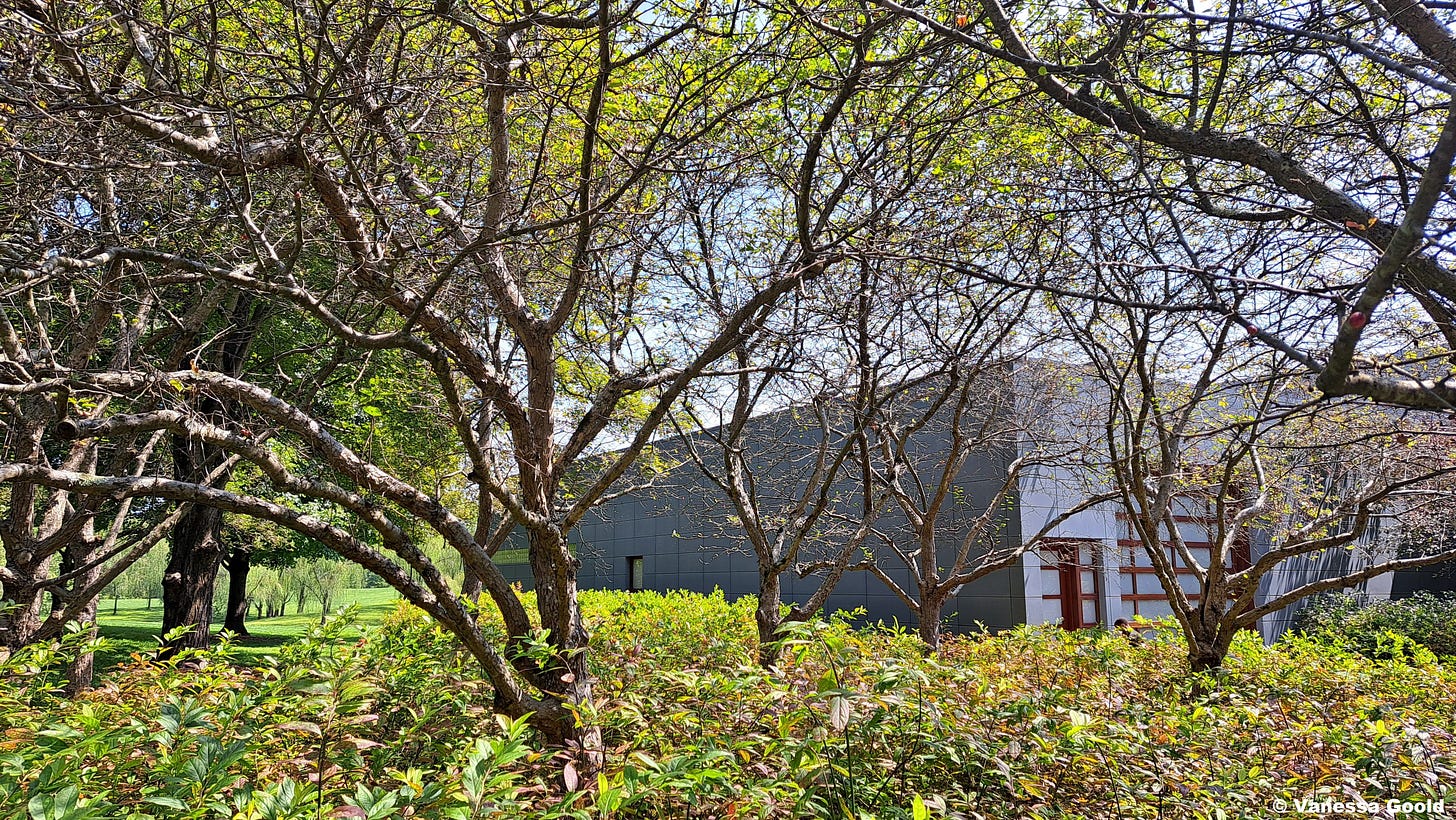
Berries and fruit
Birds and other animals use berries, seeds, and fruit year-round as a cornerstone of their diet. Especially during fall, winter, and migration periods, berries and fruit become crucial survival foods for many bird species. While resources are greater during the summer and early fall, food options dwindle during the colder months. Birds need more calories while they are migrating over large distances, and they depend on finding fruits and berries along their routes.
Happily, there are shrubs for that!
To help support bird populations and wildlife in general, try adding some of these shrub species to your plantings:
Serviceberry/shadbush, Amelanchier spp.: Early summer fruit for birds and humans!
Black chokeberry, Aronia melanocarpa, and red chokeberry, Aronia arbutifolia: Attractive clusters of berries persist into winter, high in antioxidants.
Winterberry holly, Ilex verticillata: Show-stopping red berries on bare branches in winter (remember that this plant is dioecious. You’ll need females to make berries and one male to pollinate every four or five females planted within about 50 feet).
Arrowwood viburnum, Viburnum dentatum: Pretty white flower clusters followed by blue-black berries; adaptable; attractive to many bird species.
American beautyberry, Callicarpa americana: Unique vibrant purple berries that persist into winter. A favorite of Eastern mockingbirds.
Spicebush, Lindera benzoin: Red berries for migrating birds, plus bonus! It’s the host plant for the spicebush swallowtail butterfly.
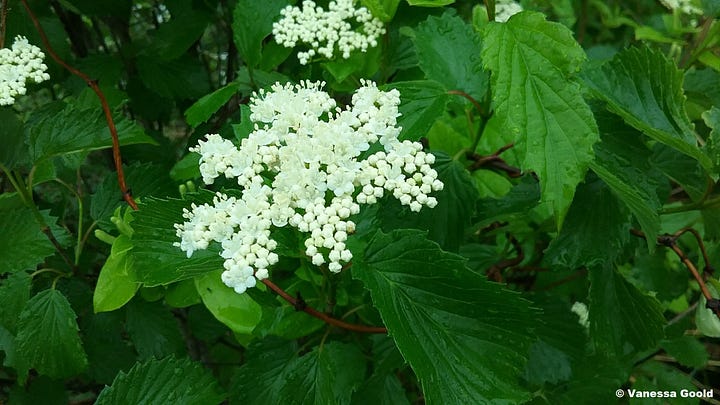
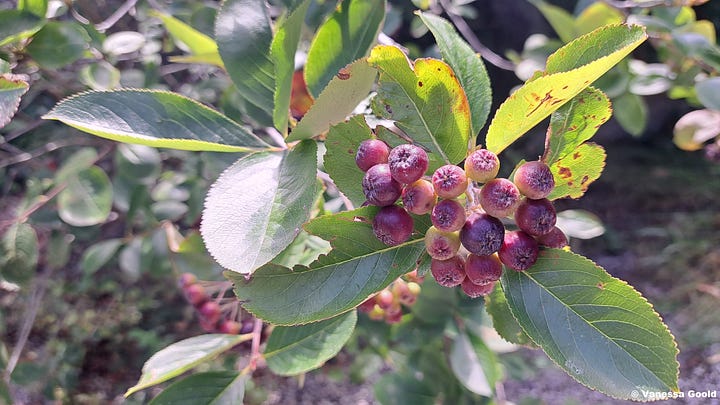
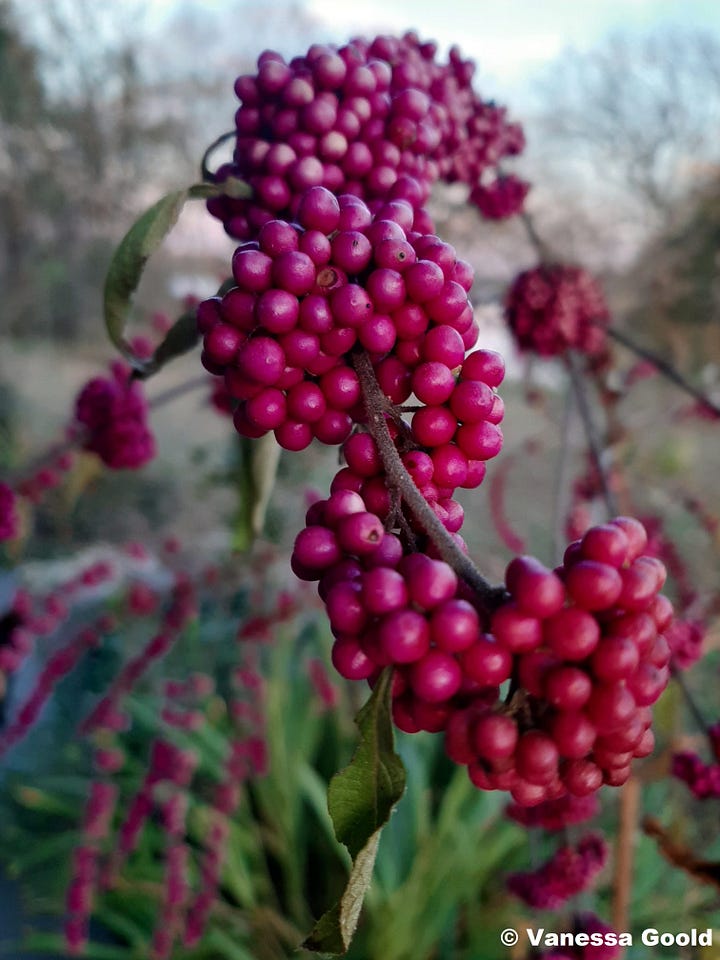
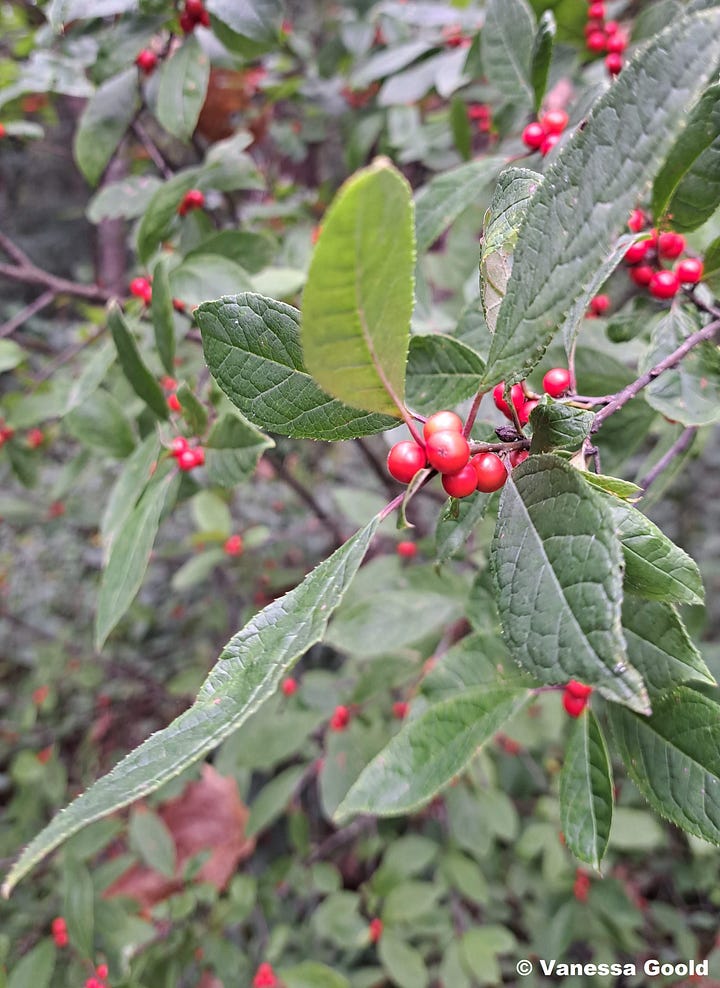
Shrubs’ aesthetic and structural contributions to the garden
Nothing makes a garden (literally) come alive so much as when the aesthetic human appeal of the garden’s design is achieved with well-adapted native plants that draw all manner of wildlife. There is a huge difference between walking through a beautiful exotic ornamental garden that is well-proportioned and full of color, and spending time in an ecological garden that has similar structural elements with the addition of buzzing insects, fluttering butterflies, chirping birds, and occasional glimpses of amphibians, reptiles, and mammals. And one of the secrets to creating a truly living garden is to employ the right kinds of shrubs.
Shrubs build out the “bones” and give year-round definition to gardens, acting as walls to garden rooms and anchors to garden spaces. They offer a backdrop and a visual weight for herbaceous perennials situated around them, and create layers that lead the eye from ground to sky.
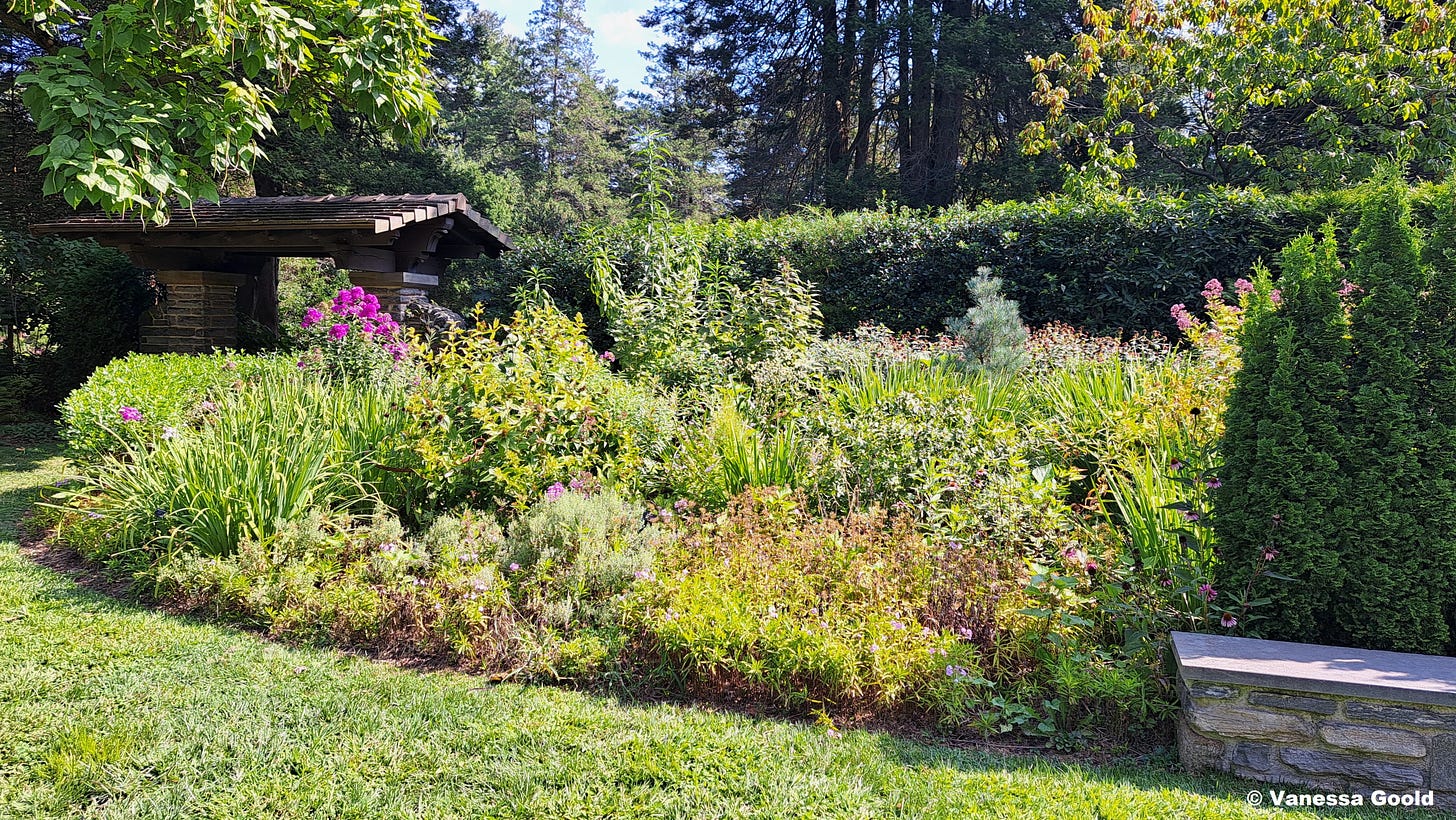
At the same time that shrubs visually punctuate plantings, they also create microclimates, sheltering more tender plants from wind, and throwing shade to help moderate soil temperatures and retain moisture in the ground. Wildlife make use of the cover as well. Box turtles, as just one example, prefer shady and moist conditions that shrubs can help to create.
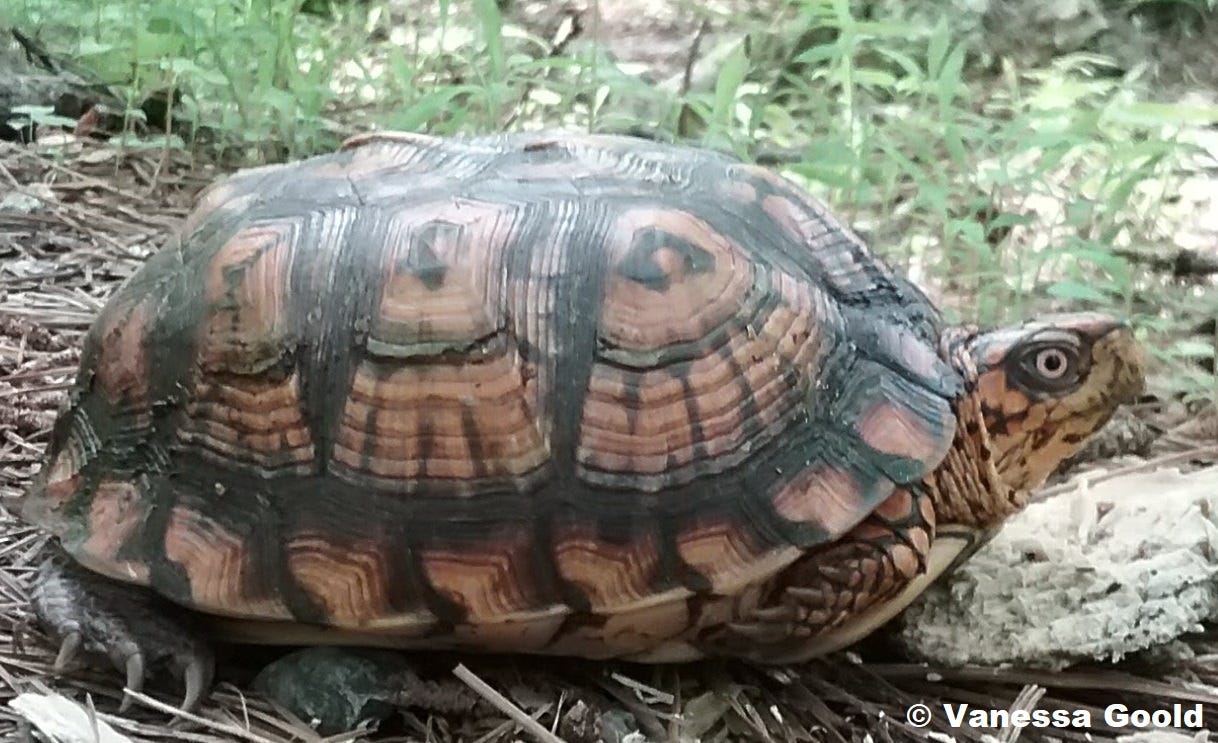
Year-round benefits
Many shrubs contribute vibrant seasonal interest and beauty in the fall and winter to extend a garden’s appeal. They do so with bright fall foliage, interesting bark, appealing stem and branch structure, eye-catching seedheads, and bright persistent fruits and berries.
A few recommended native species with stunning fall color include:
Oakleaf hydrangea, Hydrangea quercifolia: Rich burgundy to deep red foliage, interesting exfoliating bark.
Virginia sweetspire, Itea virginica: Brilliant reds and oranges.
Dwarf fothergilla, Fothergilla gardenii: Flaming shades of orange, red, and yellow.
Blackhaw viburnum, Viburnum prunifolium: Shades of purple and red.
Black and red chokeberry, Aronia melanocarpa and A. arbutifolia: Vibrant red/purple fall color, as well as persistent berries loved by birds.
Highbush blueberry, Vaccinium corymbosum: Rich bronze, red, and yellow fall color; edible berries for humans and wildlife alike.
Persistent berries should be part of every ecological gardener’s goals, because they so vitally support bird populations through the winter, while adding beauty and giving rise to wildlife observation opportunities. If you have ever witnessed a flock of cedar waxwings discover and descend upon a berry-filled shrub or tree, it’s an experience you’ll never forget. What could be better?
Winterberry holly (Ilex verticillata), chokeberries (Aronia spp.), and American beautyberry (Callicarpa americana) all produce persistent berries. For interesting bark color or texture, try red-twig dogwood (Cornus sericea), which has a profusion of bright red younger stems, or common ninebark (Physocarpus opulifolius), whose peeling bark and finely branching twigs make for striking winter appeal. Witch hazel (Hamamelis virginiana) blooms in the late fall or early winter when almost nothing else is blooming with delicate tinsel-like yellow flowers that nearly twinkle! Meanwhile, witch hazel seeds burst explosively from their capsules and land on the ground, where they are enjoyed by ruffed grouse, northern bobwhite, and wild turkeys.
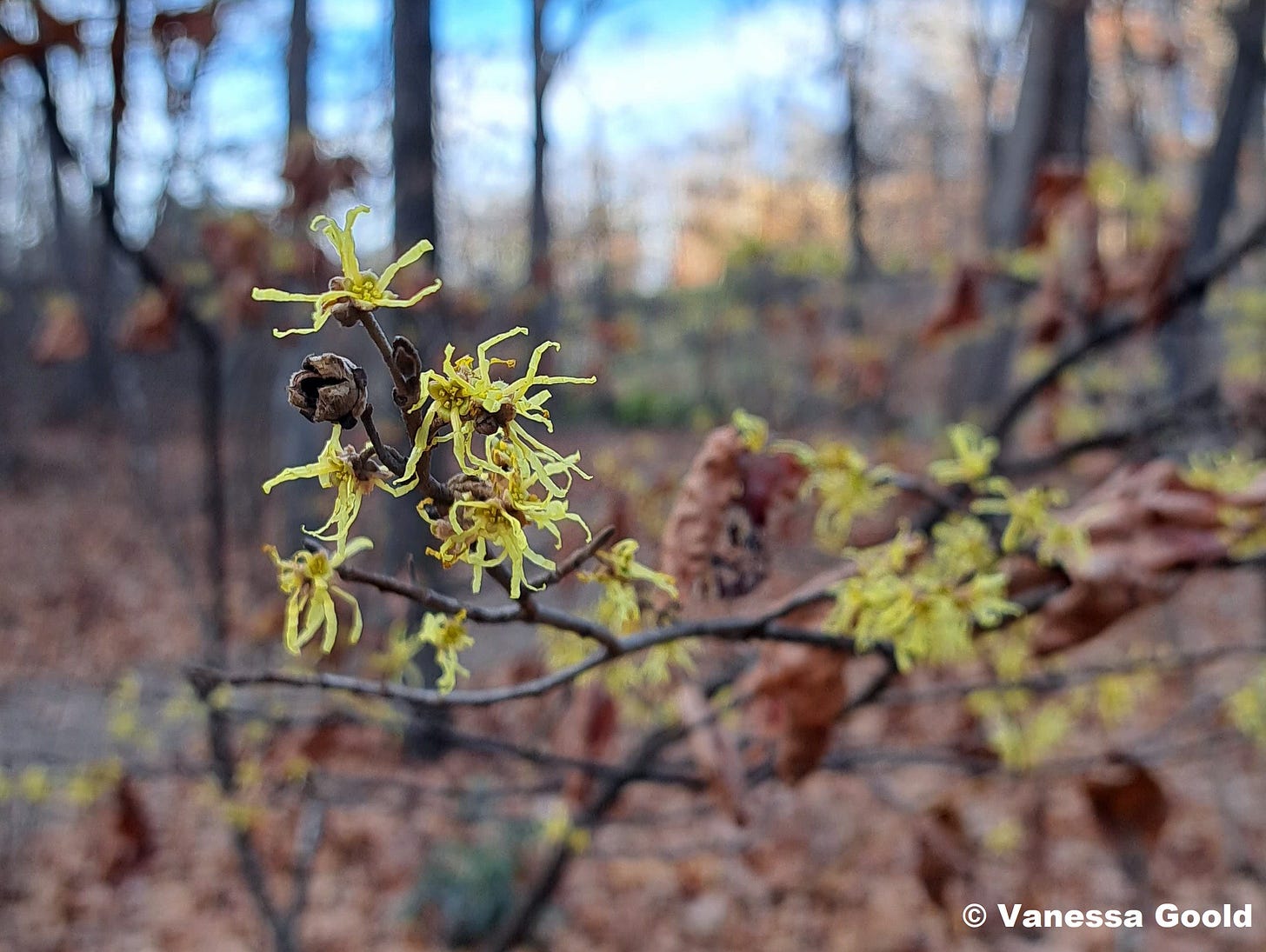
Evergreen shrubs
A number of evergreen shrub species occur in the Mid-Atlantic region, and they include more broadleaf evergreens than coniferous. Broadleaf evergreens have large green leaves that remain throughout the year, while coniferous ones have small needles for leaves. The perennial foliage on both kinds of evergreens gives dense, continuous habitat and cover for wildlife. Aesthetically, they create effective visual and sound barriers (think hedges) while offering contrasting textures and forms that play off of deciduous plants. Evergreen shrubs maintain garden structure with their presence through the winter. Wildlife benefit from this crucial shelter from winter wind, snow, and predators, using it for roosting, resting, and foraging.

A quick side note on arborvitae. While arborvitae (Thuja spp.) is probably the most commonly planted evergreen shrub species in the eastern United States, the actual straight species, Thuja occidentalis, native to eastern North America, is really a tall tree species of higher elevations and northern states and Canadian provinces. Shrub and screening versions of arborvitae sold at many garden centers mainly are cultivars and hybrids, bred for compact size and conical habit. Thuja occidentalis is a valuable species for wildlife, and a favorite food for deer. I’m not anti-arborvitae, per se, but there are many other choices to fulfill your evergreen shrub ecological gardening needs.
The following species of native evergreen shrubs make wonderful additions to gardens in the Mid-Atlantic region:
Inkberry holly, Ilex glabra: A native alternative to boxwood, adaptable to various conditions. It is semi-evergreen, either retaining its leaves for part of the winter, or retaining only some of its leaves throughout the winter.
American holly, Ilex opaca: A slow-growing larger shrub to small tree with iconic red berries and spiny leaves for excellent cover.
Mountain laurel, Kalmia latifolia: Beautiful spring flowers, dense evergreen foliage. Prefers acidic soil and shady conditions.
Southern wax myrtle, Morella cerifera / Northern bayberry, Myrica pensylvanica: Aromatic foliage, waxy berries for birds, salt tolerant (Southern Bayberry is semi-evergreen in the northern Mid-Atlantic).
Eastern red cedar, Juniperus virginiana: Though this is really a tree, it can be kept as a large, dense shrub if pruned; offers berries (cones) and excellent cover. Needs full sun.
Rosebay rhododendron, Rhododendron maxima / Catawba Rhododendron, Rhododendron catawbiense: Large, broadleaf evergreen with showy pink spring flowers.
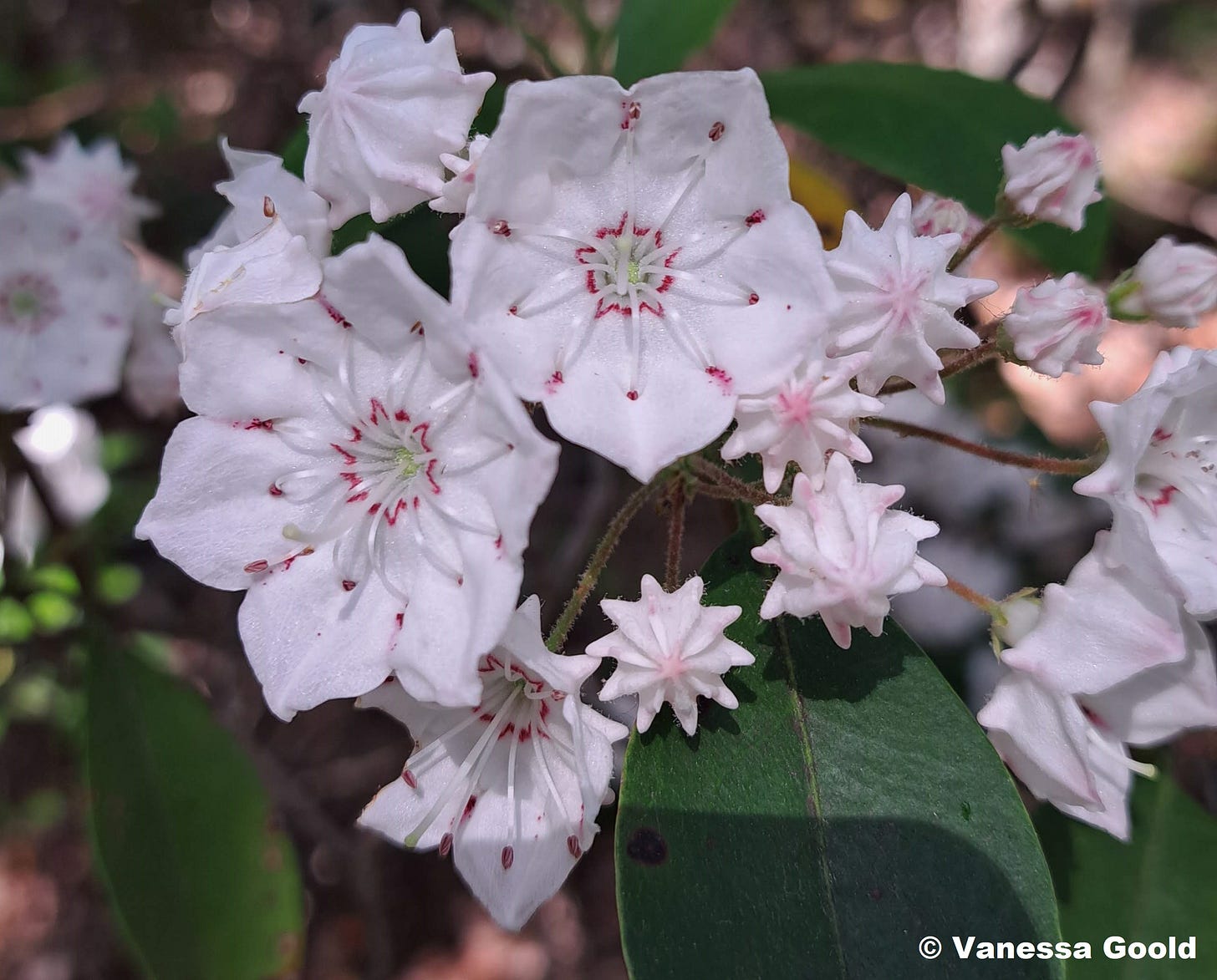
Practical benefits of shrubs for the gardener: Low maintenance and longevity
Compared to herbaceous plants, native shrubs require much less maintenance and attention once they are established. After the first few growing seasons, they should not need much (if any) special watering. They generally suffer less from pests and diseases (with a few exceptions) because they are well adapted to local conditions. Shrubs give you a lot of “bang for your buck” when you need to fill a large area, because a single shrub can cover a relatively large area once mature, so you don’t need to purchase as many plants in the first place. And many shrubs are very long-lived, surviving for decades if planted well in a favorable situation. Like trees, they can be legacy plantings. Their ecological benefits only grow with time, as they gracefully fill out.
The main maintenance consideration for native shrubs is pruning. In general, if you choose well, you shouldn’t need to do much pruning at all. Simply let the shrub express its natural growth habit and form. However, you should always remove broken, dead, and diseased branches at any time of year. You can prune for shape and size if a) you have inherited a shrub that’s not sited well but still is providing benefit to the garden; b) you want to achieve a desired look; or c) you need to rejuvenate a shrub that is not flourishing. Rejuvenation pruning means drastically cutting back a plant and letting it regrow from new sprouts near the base.
Pruning for form is best done in late winter or early spring while plants are dormant, except for species that bloom on last year’s growth, which you can prune right after they bloom in early summer. Examples of summer-pruned native shrub species would be hydrangea, ninebark, chokeberry, azaleas, viburnums, rhododendrons, and Virginia sweetspire.
Designing with native shrubs
Use native shrubs to develop a rich, multi-layered ecological garden, connecting the canopy to the understory and mimicking natural woodland edges (it’s those thickets again!). Think like a bird or a flying squirrel or a salamander: how would they like to be able to use a space to fulfill their life cycle needs?
Plant several shrubs around and underneath a tree to offer continuous habitat and cover at varying heights. Some birds are tree-top species and like to spend time in the canopy. Others are mid-level birds that cruise along in the middle layer, while still others need to hop down to the ground and scuffle around or snap up seeds and insects before returning to higher perches.
Use a variety of shrub species to create a mixed hedge or to bound a garden room. This creates visual interest, lets you select species with interesting blooms, berries, and bark at different times of year, and will draw in a diversity of wildlife. Avoid a monoculture like a wall of arborvitae, and welcome a mosaic aesthetic.
In front of or around your nicely situated shrubs, you can fill in with your seasonal interest plants that pop with color, or lacy ferns, or subtle groundcovers - or all three! There is no end to the combinations and permutations possible.
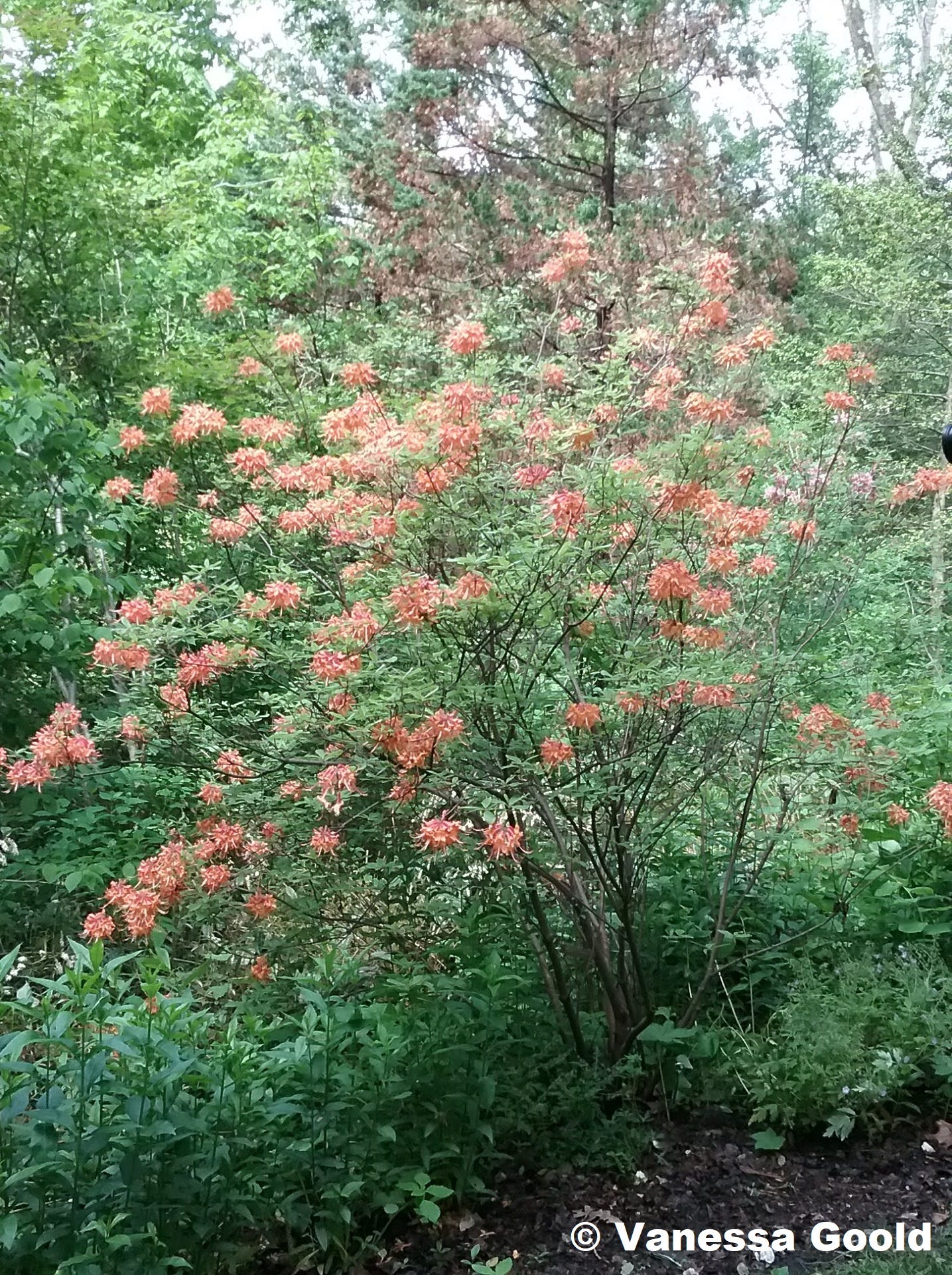
Remember to research your shrubs’ native range, growth habit, mature size, and preferred growing conditions before planting. When planting near a house or building, leave plenty of room so that once the plant achieves its mature size, there will still be a couple of feet of air space between its outer branches and the building. A very common mistake is to think that you can center the new shrub within two or three feet of an exterior wall, without considering that it will expand in all directions as it grows. Soon it presses against the structure, its branches bending and scraping against the wall. Similarly, visualize the shrub’s ultimate height and make sure you aren’t placing it where it will grow in front of your windows and block your views from inside.
By planning ahead and choosing the right shrub for the right place, you will do your future self a huge favor. You’ll minimize maintenance, increase the plant’s chances for success, and reduce the likelihood that at some point you’ll have to dig up or remove the shrub, which can be arduous and/or costly.
Embrace the Shrub!
I hope I have made a convincing case here for employing native shrubs in your ecological garden. They give so much and ask so little. Shrubs do require some patience, as they take a bit longer to fill out than some fast growing herbaceous plants. However, they are worth the wait! And you can always satisfy your wish for gratification by interplanting with faster-growing plants while the shrubs settle in, and later move those plants or let the shrubs naturally out-compete them. That would be the move of a wily and far-sighted garden pro.
If you’ve discovered a particular shrub that you’re in love with, share it here! What do you like about it, what has it helped you to discover, and what growing conditions does it seem to thrive in? I’d love to hear!
Finally, I’ll leave you with this image of some fanciful shrubs, which hops across the garden like kids in a three-legged bag race:





I love this!! Black chokeberry has been the real standout in our young garden. It had one berry when we planted in the fall. Now there are about 8 clusters that the House Finches and Robins have started to pick at.
High hopes next year for nannyberry and serviceberry. Neither bloomed this year.
Thank you for this! I'm relatively new to native plants (4 years into planting a wildlife garden after many decades of gardening with non-natives) and am starting to make an effort to work more shrubs into my landscape. I have ninebark (I'm in love with this plant!), blueberry, a shrubby native honeysuckle (can't remember the name) viburnum, winterberry, lots of hydrangea. I'm aiming for more late season berry-bearers for the wild neighbors (we have a long winter in western Massachusetts).